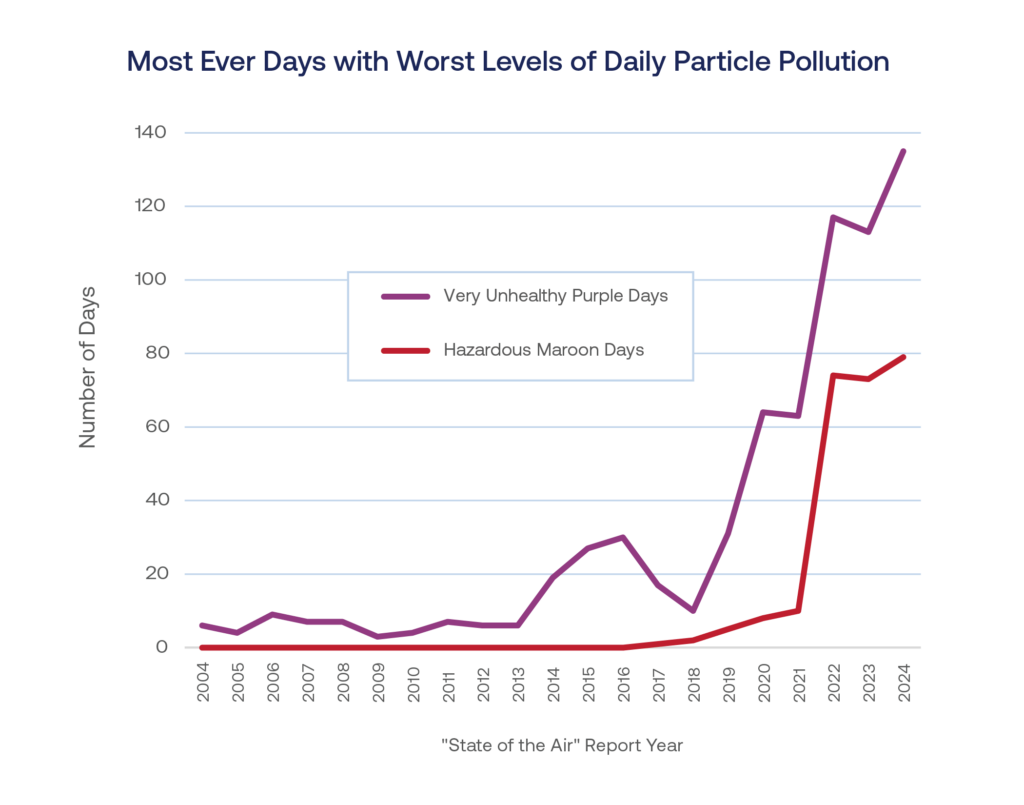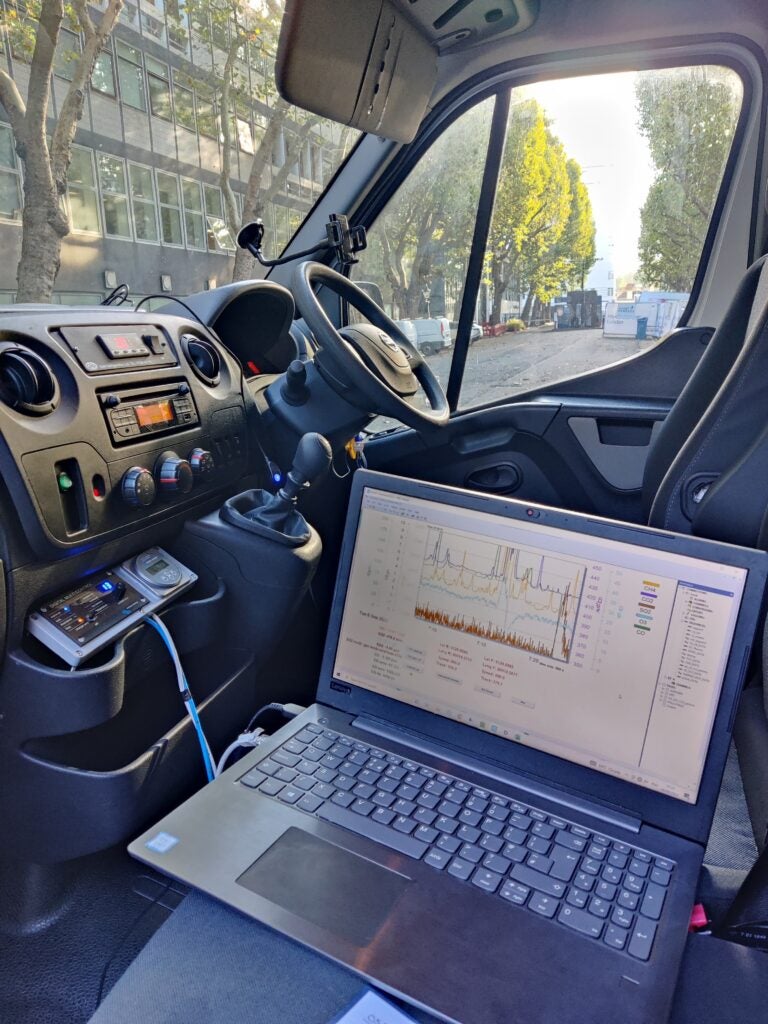What’s new: The American Lung Association released its annual State of the Air report last month, showing that climate change is making it more difficult to clean up our polluted air. About one-third of all Americans were breathing unhealthy air in 2023—a greater number than in year’s past, despite gains made through ever improving vehicle, industrial, and oil and gas
emissions standards. And while these air pollution trends are another indication that a warming planet is having a negative impact on our daily lives, we still have tools within reach that can help improve air quality for millions both in the United States and around the world.
Why it matters: As the planet warms, and wildfires become more common, high levels of PM2.5 (fine particulate matter, or soot) are reaching into corners of the country previously considered safe from such smoke. The impacts can seem like a nuisance for healthy individuals, but for those with health problems, a series of days dominated by wildfire smoke can be dangerous or even deadly.
In addition, growing numbers of hot, sunny days combined with increasing instances of high-pressure areas create the perfect conditions for ozone. In the United States, the Clean Air Act has helped reduce the amount of ozone precursors in the air and is driving down the number of people exposed to the highest number of ozone days. That has helped reduce the number of people living in counties with a failing ozone grades. However, despite that improvement, these hot, stagnant days are having a substantial impact on counties. In fact, twice as many U.S. counties are seeing air quality decline than are seeing improvement due to unhealthy levels of ozone.

Graphic from 2024 State of the Air Report, Courtesy of The American Lung Association.
What we can do about it: EPA recently strengthened the annual fine particle (PM2.5) standard to 9 micrograms per cubic meter and announced plans to improve monitoring. And while U.S. standards are moving in the right direction, they still do not meet those established by the World Health Organization, set at 5 micrograms per cubic meter averaged annually. Many cities met the old standard but do not meet this new strengthened federal standard. These cities represent areas where residents have been breathing unhealthy air due to human activity—not wildfires.
Here’s a list of both government and scientific ways we can combat air pollution:
- We can lower pollution in the air by reducing its components like NOx, hydrocarbons and volatile organic compounds (VOC)s, which are prevalent in both industrial activity and our cleaning supplies.
- We can conduct more studies of VOCs to determine how much they are contributing to poor air quality.
- We can use growing amounts of data to pinpoint hotspots, in order to better understand the sources of persistent pollution. These include data from new monitors that communities across the U.S. are now installing using the Biden administration’s Inflation Reduction Act funds, as well as from satellites, which cover areas of the country that are not monitored at all.
Beyond those actions, we can take personal steps to stay safe on days with high ozone and soot levels, by purchasing relatively inexpensive air filters that can go from room to room, cleaning both pollutants and allergens. It’s also possible to track both dangerous smoke and soot levels using a variety of free websites and apps, like AirNow.gov. Tools like EDF’s Air Tracker can also help us see how pollution travels to better understand its sources and impacts.
While it’s true that impacts from climate change pose new challenges to our efforts to curb pollution, with the help of new tools and data, we can overcome them.










